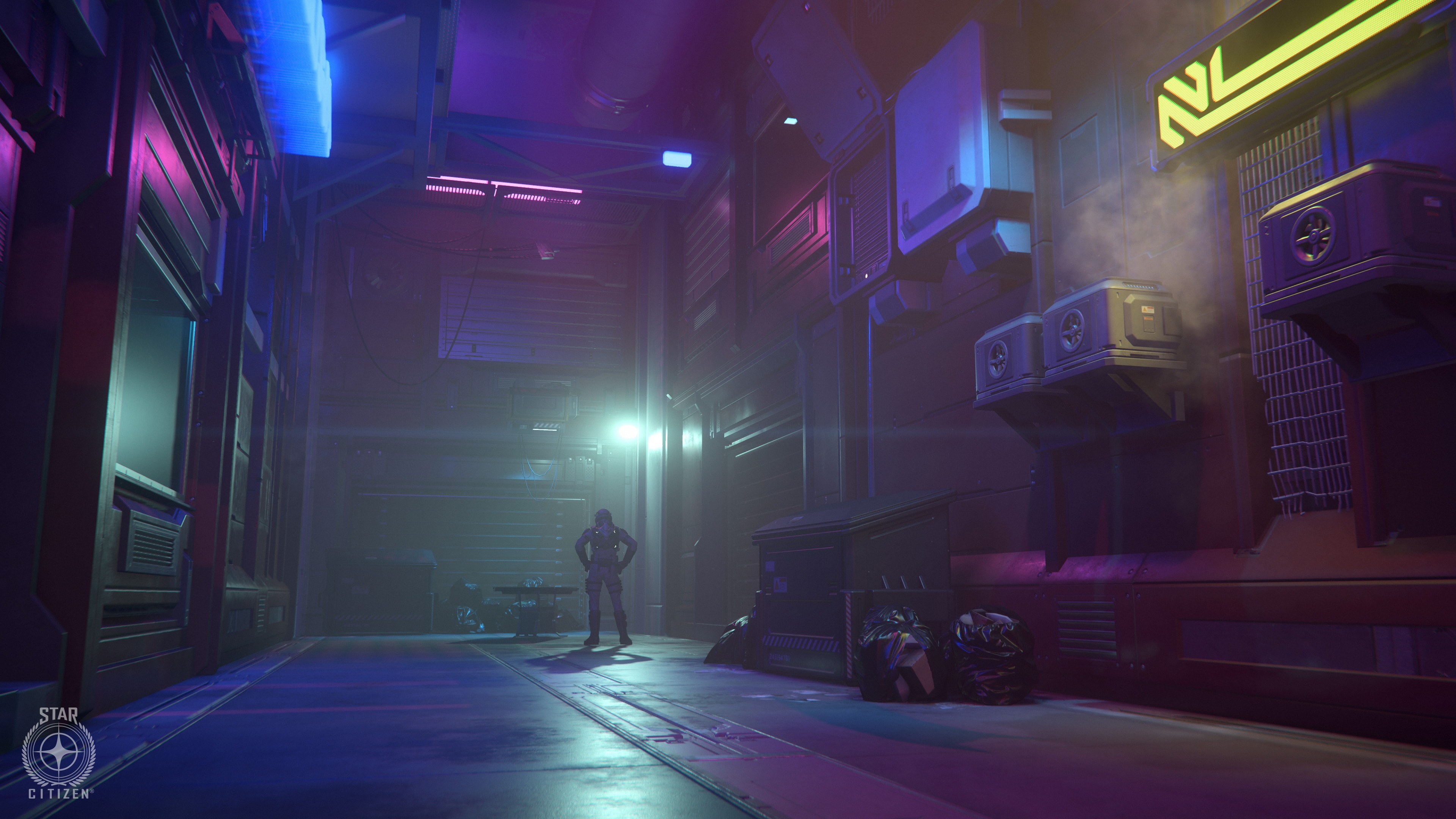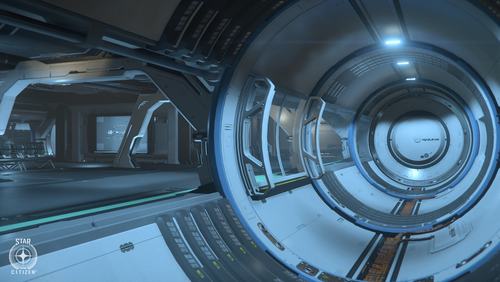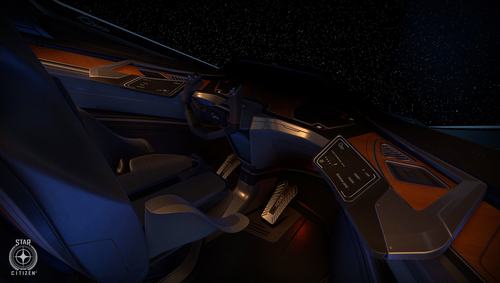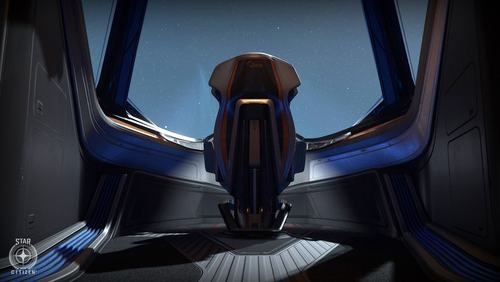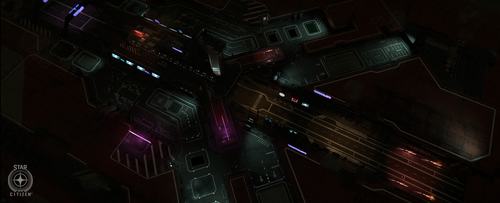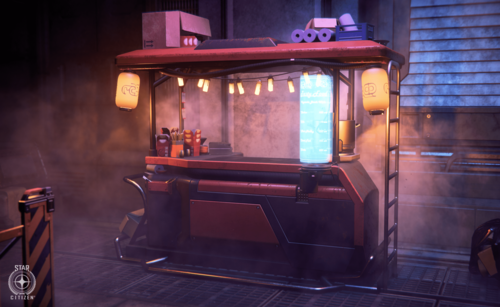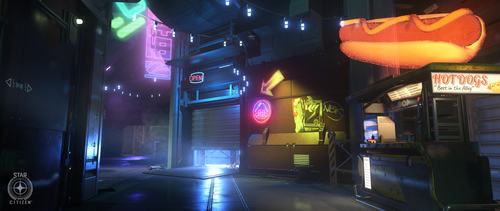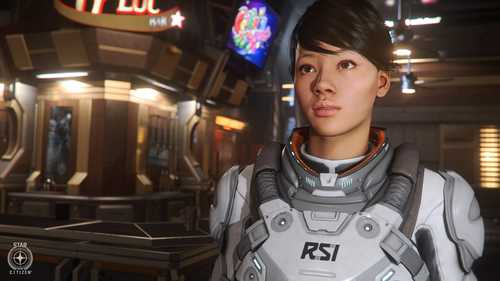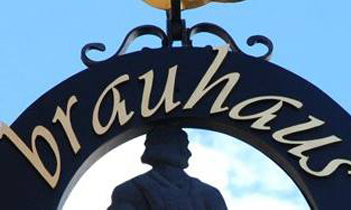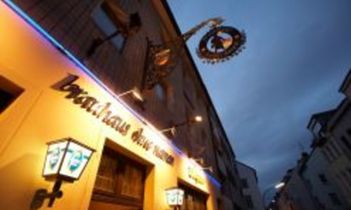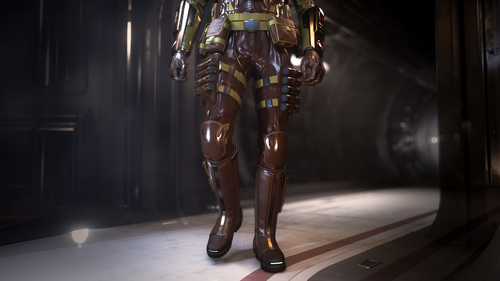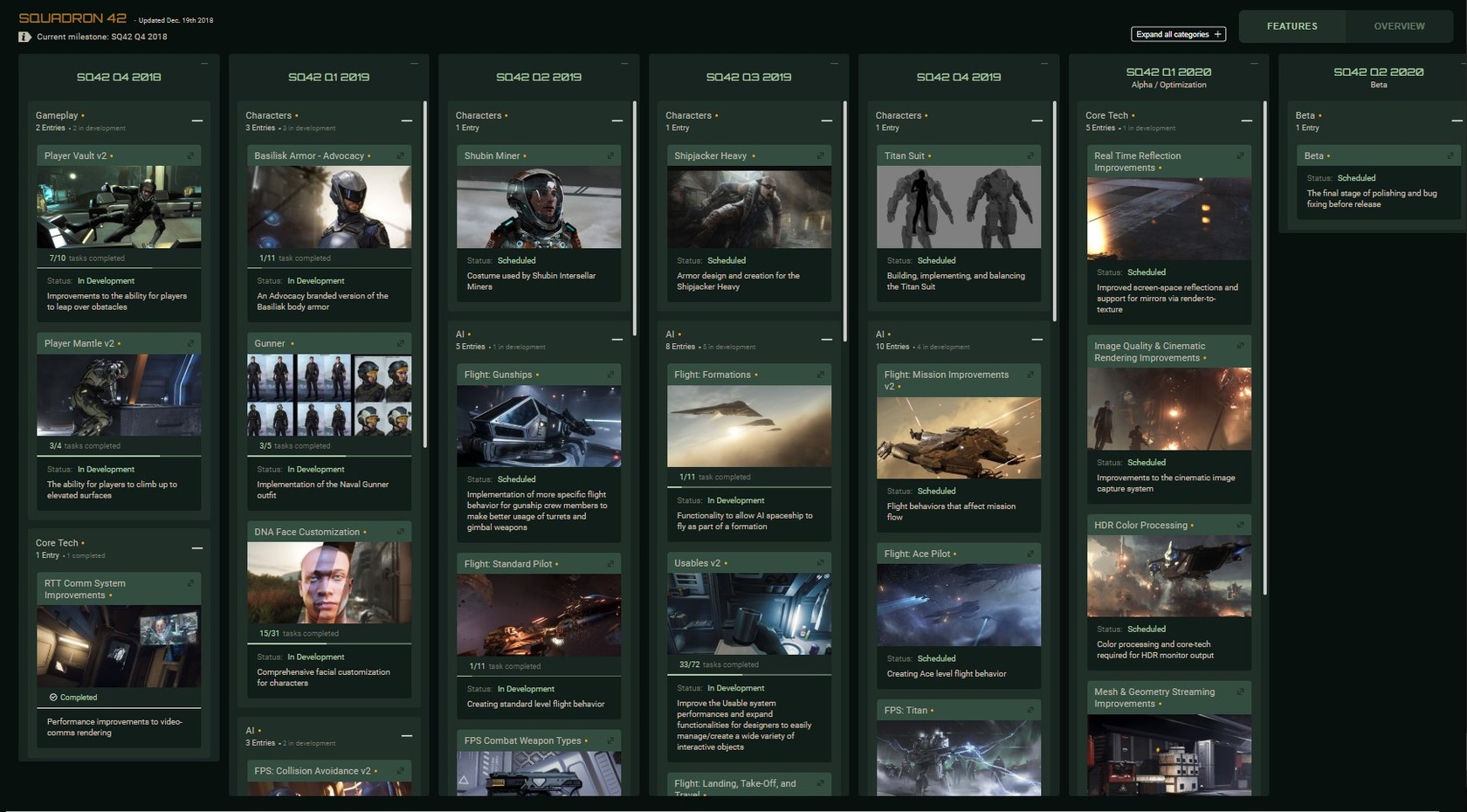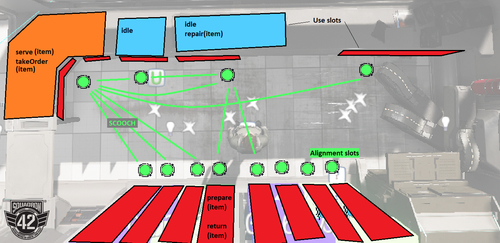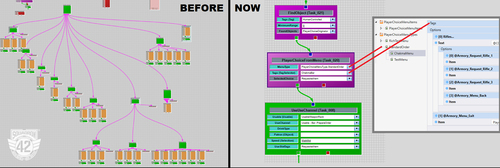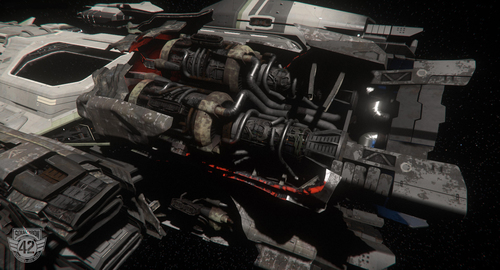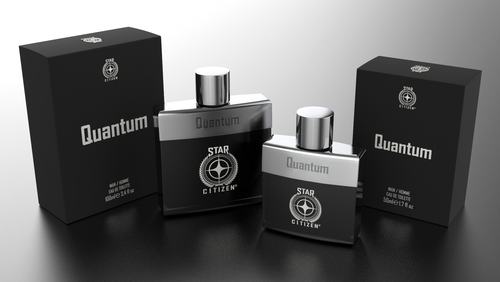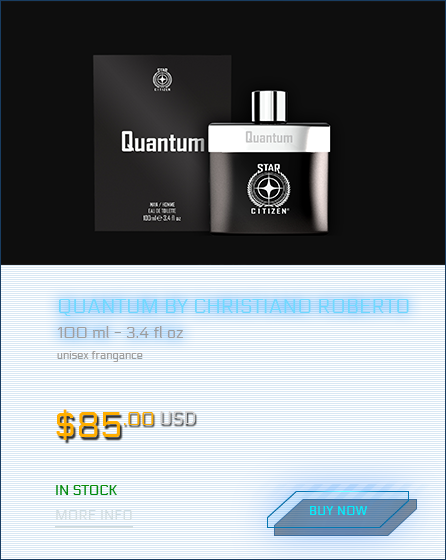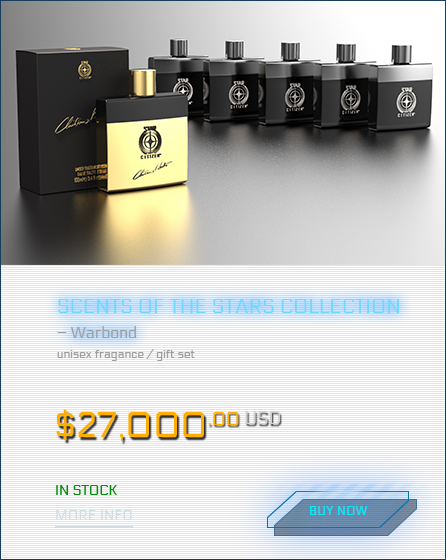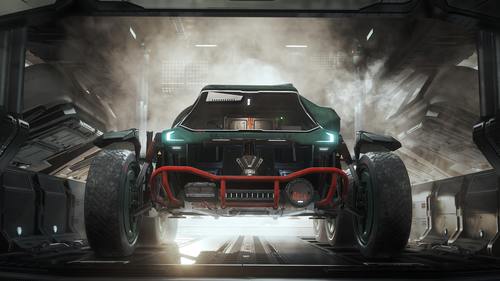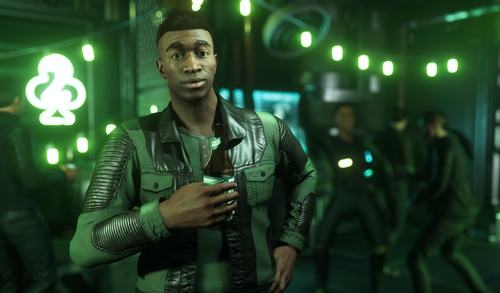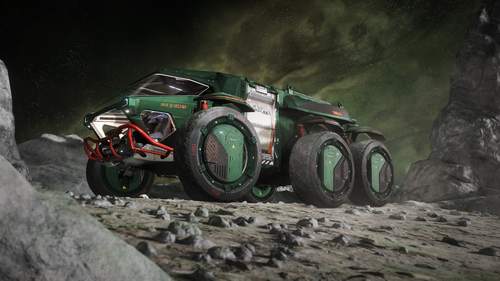Last week, we updated the public roadmap with content all the way up to Alpha 3.9, where we’ll be flying Vultures to Crusader and beyond. If you missed the latest update, take a look, as progress for these new features will start appearing in your monthly reports soon enough.
AI – Character
We start with Character AI, who spent the month making general improvements, firstly to combat behaviors to make it easier for the team to assign different tactics to different characters. This work happily fixed a few bugs with vision perception and cover selection too. Secondly, NPC locomotion saw the integration of the collision avoidance system into smooth locomotion, which now takes into consideration the edge of walkable navigation areas.
Naturally, bug fixing, stability fixes, and optimizations were also done for Alpha 3.5.
AI – Ships
Ship AI implemented new pilot skill levels to vary the agility of enemy ships and determine how they balance self-preservation and aggression. Improvements were also made to how non-player traffic behaves around landing zones.
AI – Social
The Social AI Team finished the first pass of ‘scooching’, which made its monthly report debut last month. If you missed it, scooching enables a character to fluidly move from one action to another within a group of useables.
Design supported the set up of the bartender/vendor character by providing necessary tech pieces where needed. Optimization started on usables, including the caching of usable entries and TPS query time-slicing.
Animation
March saw Animation readying mission-giver Tecia Pacheco for her Alpha 3.5 debut and finishing the animation sets for Recco Battaglia and the ship dealers. They also implemented new female emotes and brought the male versions up to the current quality standard, which included stopping a plague of different technical issues.
Focus was also on two big-ticket items: developing the final jump system and the female playable character. Finally, the team worked on the combat AI system, adding new weapon options for enemies to use against the player.
Art – Characters
Character Art were one of the many teams collaborating on Alpha 3.5’s facial customizer. This coincided with the adding of the female playable character into the game and creating new armors wearable by both sexes (which will continue into the foreseeable future). Tecia Pacheco’s hair was tidied up before launch and the few non-Alpha-3.5-related hours were spent refining the hair creation pipeline.
Art – Environment
Many Environment Art devs devoted the month to Alpha 3.5, making quality-of-life improvements, bug fixing, and polishing assets. Several locations, including Hurston and Lorville, were refined and tweaked to give an overall improved visual experience. The ongoing planet tech development rolls on too, with current efforts becoming the foundation of wider improvements coming later in the year. The team are also looking into ways to better scale natural features like canyons, with first tests looking promising.
The final touches were added to ArcCorp ahead of its big release, with huge strides made early in the month when Area18, Riker Spaceport, and the surrounding city received finalized textures, materials, and finishes. While the planet was ‘content complete’ a while ago, the last stages of development saw countless optimization tasks completed to make it good enough for players to explore. The final level of detail (LOD) tweaks were completed to enable the assets to perform well in-engine, along with other technical aspects like tweaking view distance ratios, altering vis-areas, and merging meshes. Art of distant buildings and advertising added the final touch to the city’s vistas.
Art – Tech
Tech Art worked on the user interface for Character Customizer v2, which will see the light of day in Alpha 3.6. While the current version gives users all the required functionality, the process can be thoroughly streamlined through a number of layout and functionality amends. These changes have been prototyped and are awaiting implementation by the Gameplay Team.
Tasks towards extending the character creation ‘DNA gene pool’ were also completed, which will eventually increase the number of heads the user can choose from and blend together. While still being significantly fewer than the planned final amount, the enhanced pool will give players much greater variety compared to the nine heads per male and female available in Alpha 3.5.
Alongside customization, they fixed a few weapon-related bugs for both dev builds and Alpha 3.5, such as wrongly-oriented attachments, broken or missing animations, and a tagging issue causing the player character to be assigned the wrong animations. They supported Weapon Art with rigging and engine setup for several upcoming releases and worked with Animation and AI Programming on the first implementation of the new usable system.
Audio
Alpha 3.5 features the new flight model, the development of which presented an unmissable opportunity to expand on the ship audio experience. Improvements include new sound effects for strain and vibration, afterburners, maneuvering thrusters, and atmospheric flight. They also include accurate point source sound emitters and general improvements to the overall design, implementation, and mix.
Naturally, attention was given to ArcCorp and Area18, with new environmental dialogue, music, and sound effects implemented to contribute to the overall sense of a thriving metropolis. These include PA announcements, diegetic music, spot ambiance effects, dynamic advert audio, and systemic planetary ambiances. The team’s work is again complemented by the brilliant ArcCorp music cue from composer Pedro Camacho.
Audio was also produced for the Kastak Arms Coda pistol, Gemini S71 assault rifle, Xi’an Kahix rocket launcher, and Banu Tachyon ship cannon.
Finally for Audio, notable developments were made to the Foley system, including better footstep material recognition, redesigned depressurized footsteps, and varying footstep effects dependant on character heaviness and footwear. The Foley sound effect sync was improved when running too, as were collision sounds when rag-dolling.
Backend Services
Throughout the past month, Backend Services supported Alpha 3.5, fixed various bugs, and adjusted backend-supported features. On the main development front, great progress was made on the GIM rewrite, with the new matchmaker successfully tested internally. The GIM’s internal match/group management system also came to life. These changes are significant because, rather than being code existing inside the legacy GIM application, they are now individual and highly fault-tolerant services that can be scaled as the project develops.
Another major change was the introduction of the variable service, which came with a surprisingly high volume and rate of data.
One of the team’s goals this month was to provide much needed insight and analytics on various types of data coming from the DGS. So, a new system was created to track the rate of individual DGSs along with information about specific variables, enabling the team to fine-tune how data is serialized and how often it’s pushed to the backend.
The first major part of the iCache has been completed and tested internally, too. The iCache is a highly distributed and fault-tolerant storage/query engine that greatly out-performs the current pCache. It provides an indexing and query system that can be utilized by other services for specific and complex item queries. This system is important going forward, particularly as the Persistent Universe sees greater volumes of players and server meshing comes online.
Community
The community celebrated
St. Patrick’s Day (or Stella Fortuna!) with a screenshot contest calling for in-game party pics. Plenty of outstanding images of memorable moments were received, but there were only three pots of gold to hand out – the lucky winners taking home a Constellation Phoenix Emerald, Mustang Delta, and Ursa Rover Fortuna.
March saw the unveiling of the multi-crew explorer, the Corsair. Should any prospective pathfinders be unsure whether they want to sail the stars in Drake’s latest, the recently released
Q&A should help. Jump Point, the monthly subscriber-only magazine, took an even deeper dive into the Corsair’s design process along with a behind-the-scenes look at the new character customizer, a Whitley’s Guide on
MISC’s Reliant series, and more.
Shouts of ‘Triggerfish!’ could be heard across the ‘verse when we announced our first new merchandise offerings of 2019 on April 1st:
The Scents of Star Citizen collection. Classic fragrances of the past meet the mysterious essence of the future in Quantum, an innovative cultivation that transcends space and time.
Content – Vehicles
While the Vehicle Content Team predominantly focused on the three MISC Reliant variants and continuing work on the 300 series, they found time to work with Animation on a better system for setting up character ship entry and exit animations. The also tackled a variety of vehicle bugs leading up to the release of Alpha 3.5.
Design
Design’s focus throughout March was on Area18, which included adjusting the AI, usables, stores, and more. Tecia Pacheco was given a design pass, while a new team member was inaugurated with tasks to improve both the Emergency Communication Network (ECN) and NPC spoofing missions (where NPCs send out service beacons asking for help).
Regarding the in-game economy, a system built to create a robust and modular representation of item variance was polished and is now ready when needed. Inventories were also added to all new locations, including the new Alpha 3.5 weapons and items created by the Weapons Team.
DevOps
The culmination of this year’s first publishing cycle was especially busy for DevOps. The team publish internal builds every day of every month for internal testing, but demand increases drastically when additional publishes are needed for the Evocati and PTU. As the game grows, so does the complexity of deployments and the reporting requirements, with this month seeing a 69% increase in build activity. Most of this is due to the ‘feature streams’ that the team have worked on for the past few months, which isolate features from each other during development to avoid collision.
Engineering
The Engine Team supported Alpha 3.5 with extensive profiling, optimization, bug fixes, and improvements to help Sentry, the PU crash database, better analyze and catalog existing issues.
Rendering wise, they continued work on Temporal Sample Antialiasing (TSAA) with general quality improvements that translate to less flickering and a sharper picture. They also adjusted the TSAA bicubic filter based on frame time to prevent the accumulation of ringing artifacts at high framerates. For hair, they added an experimental option for custom tangents, removed the temporary scatter model, moved the hair mask to variation map alpha, improved edge masking, and added card support for the hair physically-based rendering (PBR) shader. For planetary ground fog (currently scheduled for Alpha 3.6), they refined the proxy mesh tessellation and moved pre-tessellation to jobs, did the first ray marching test and implementation, refined modeling of the fog gradient over terrain, and spent time rectifying floating point precision issues.
They also completed rendering support for CPU-accessible textures for RTT video comms calls and optimized shaders to avoided unnecessary resource creation (e.g in GPU skinning). The Initial ImGUI integration was completed and will be used to unify and improve the in-game profiling tools. System and module integration were added to avoid an unorganized collection of tools and a text/tag searchable configuration system for registered tools (similar to visual code) was implemented. To better improve load times, the team created a new load time profiler to track file access (times accessed, data transfer, etc.), amended the IO scheduler for SSDs and HDDs to give faster load times and response, and vastly improved file access in the shader system to speed up initialization at start-up.
In addition to the compile-time analysis tool developed last month, they finalized an add-in tool to generate optimal uber file sets and, as a result, reshuffled game uber files for even better compile times.
Work also began on a physics debugger that will allow the team to record issues, play them back, freeze time, etc. to help understand and speed up fixing complex physics issues.
Features – Gameplay
Throughout March, most of the team dedicated their time to working with the Character Team on the customizer, including the design flow, user interface, and the implementation of the female playable character. The rest focused on implementing comms video streaming improvements. All of the team’s work this month made it into the Alpha 3.5 build, so can be seen by anyone in the Persistent Universe.
Features – Vehicles
Improvements to gimbaled weapons were finished for Alpha 3.5 and the radar and scanning systems received a polish, including the implementation of focus angle and ping fire. Under-the-hood progress was also made with vehicle item port tech, specifically with the vehicle .xml migration to Data-Forge. March’s final stretch was spent fixing game crashes and bugs for the upcoming release.
Graphics
Alongside visual tweaks and fixing stability issues for Alpha 3.5, the team better aligned the sun and shadows with fog in large spaces (such as hangars) and fixed a persistent glitch with indoor lights. For vid-comms and general render-to-texture, the teams fixed a few issues that were interfering with brightness along with intermittent cases where lights on holograms were disappearing. They also switched most holographic scenes over to a forward-shaded render pipeline to improve efficiency.
Graphics also got in on the gas cloud feature by supporting Design, adding the ability to rotate tunnel pieces, and creating a more intelligent streaming system to enable them to lay out large sections of the game without running over the memory budget.
Level Design
The Level Design Team barreled on with Area18, fixing bugs and generally preparing it for its unveiling. This included a lot of playtesting and tweaking of the room-system, landing areas, transit system, and more.
Planning began for the upcoming procedural tool and next set of procedural space stations. Prototyping was done on cave layouts and potential gameplay was ideated in close cooperation with the Environment Art Team. There were also updates to Lorville, with the addition of small and medium hangars and a new transit line between Teasa Spaceport and the Central Business District (CBD).
Lighting
Like many others, Lighting almost entirely dedicated their month to finalizing Area18, which required collaboration with a lot of other teams. Particularly, they worked with Props and Environment Art in the final push to raise the visual standard and unify the look across the wider landing zone. Performance is always a concern, so special attention was paid to ensuring the maximum lighting quality was achieved within the defined frame budgets. After lessons were learned during the development of Lorville, the team were able to optimize the new location’s lighting far more efficiently.
Aside from Alpha 3.5, Lighting had a hand in the development of the character customizer by providing a clean, high-quality lighting rig for the UI. They also supported the reworking of the Echo 11 Star Marine map, providing additional polish, optimization, and clean-up.
Narrative
In March, Narrative worked with Design to identify the production nodes and manufacturing locations of all of Star Citizen’s corporations for the expanding economy system. This led to a review of the item inventories of Stanton’s shops to make sure stores were carrying items appropriate for their location. The team also worked on generating names for various vehicles, including the Ursa Rover Fortuna.
Narrative filled Area18 with a variety of posters, ads, and props to flesh out the lore of Stanton’s newest landing zone. They also worked with the Live Design Team to support mission content for Tecia Pacheco. Finally, Alpha 3.5 will also provide a first look at the new Banu language that is being developed, so keep an eye out for more info on that.
Player Relations
Player Relations were busy throughout March supporting the Evocati and players smash bugs in the PTU. Initially, they worked alongside the Evocati for several builds to test out the new flight model. Once it was stable, they added Concierge and Subscribers to test out the other key features. Eventually, all backers were welcomed into the PTU before Alpha 3.5’s wider release.
“We say it every month, but we can’t thank our volunteers enough for the wonderful efforts they put into helping us build this game (especially you Avocados!).”
Props
At the start of March, the Props Team took Area18’s assets from the ‘modeling complete’ phase through to ‘final art’, which included the technical set up, LODs, prefab setup, and bug fixing. They reached ‘content complete’ status half-way through the month before heading into the final polish pass. The area’s food carts were pushed a little further with branding and dressing prop variation, while the lighting was separated out to give the Lighting Team more control. Updates were also made to older street furniture to bring it up to standard and the team helped with the branding and signage assets used throughout the level.
With persistent habs included in Alpha 3.5, a pass was completed to convert a whole host of props from static objects to interactive entities, while hand grip was set up to work with the player animations and additional physics set up.
The team also took a pass at the Spectrum Unlimited kiosk, creating additional dressing, props, and magazines. The month was rounded off with a final bug-fixing pass and, of course, turtles.
QA
QA’s testing focus was on feature integration for the Alpha 3.5 branch. They tested all the new content such as ArcCorp and its moons, Area18, the character customizer, female playable character, Origin 300i rework, and Reliant Variants. In addition, stability and performance testing ramped up in anticipation of the release and included daily performance captures to help narrow down and fix performance-related issues.
The AI feature testers in Frankfurt worked hard to stay on top of the various issues that cropped up with the addition of new mission givers and changes to collision avoidance. The embedded tester for the Transit Team was kept busy debugging various low repro issues that seemed to be tied to server performance and caused issues such as players falling through floors and Lorville’s trains not turning up. Memory corruption testing is currently ongoing to help track down crashes that occur randomly during normal gameplay. This testing is being done in the PTU using custom binaries provided by the Engine Team.
Ship Art
Lead Vehicle Artist Chris Smith completed the refactor of the Origin 300i and spent quite a bit of time getting the components modeled. He has now officially moved onto a new ship, which is currently in the whitebox phase.
3D Modeler Josh Coons continues his work on the Banu Defender and is working diligently to complete the greybox stage. Since everything on this ship is brand new and almost nothing is re-used from other ships, he is being assisted by Associate Vehicle Art Director Elwin Bachiller to ensure it’s completed in time.
System Design
The System Design Team finalized the current iteration of the no-fly zones around Area18 and ArcCorp, which required new features to be added to allow it to work at the scale required. Walla and Lyria both received their share of mining resources, with Walla getting unique Atacamite geode deposits. They also finalized their work on the unification of the vendor/bartender AI, which will allow the same behavior to serve drinks at a bar and give players items from a shelf and weapons from a rack.
Turbulent
Turbulent supported the Alpha 3.5 features promotion, which highlighted character customization, ArcCorp, and the new flight model. They also supported St. Patrick’s Day, which featured the new Ursa Rover Fortuna and a screenshot contest.
The CMS backend migration continued and was deployed to the PTU (the changes will appear in the live environment within the next few weeks).
Voice servers received an upgrade which will benefit from RTCP (data channel) improvements and enable active speaker detection in comms channels. The security of voice channels has also been improved. The Services Team continued working on video streams in comms channels in order to improve long-distance calls, too.
Turbulent’s upcoming Game Admin tool will support game designers as well as the Player Relations Team by providing key statistics as well as granular technical information on groups, lobbies, and voice channels. The design is now done and development has started on its first functionality, the general information display.
Finally from Montreal, the Game Services Team continued working on the new framework that will impact all upcoming development of Star Citizen services. Thanks to this core modification, services including group, lobby, and voice channel will be more standardized and upcoming development milestones will be reached quicker.
UI
Last month, UI finalized the in-fiction advertisements and branding for ArcCorp and Area18. They progressed with the area map, including the ability to visually distinguish between different floors of an interior. As release day drew closer, they worked on various optimizations and bug-fixing.
Vehicles
This month, the Global Vehicle Team put the finishing touches to the Alpha 3.5 ships and steadily progressed with those beyond the latest release:
The largest sub-team is focused on the Origin 890 Jump, which has just completed the greybox stage and is now heading into the final art phase. Work is progressing on the Carrack, which now has the whole of the engineering section in the rear done to greybox and the habitation deck is only missing the captain’s quarters to be greybox complete. The Vanguard series is heading to the final art stage, with the rear section and cockpit both receiving a pass. The exterior is up next. Greybox of the Banu Defender rolls on, while the Character Concept Team was called on to build a foundation for the Tevarin species that will be used to help design the Esperia Prowler.
Finally, pre-production began on the P52 Merlin update, P72 Archimedes, and the Esperia Prowler.
VFX
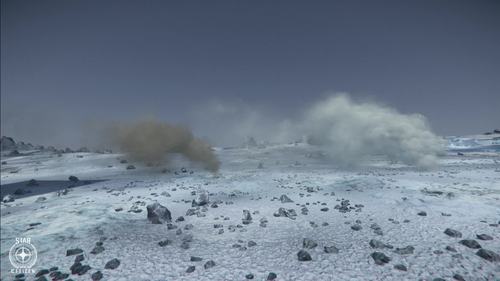
The
VFX Team rolled out their recent
GPU particle lighting changes, which includes a new optional specular shading model for particles. This multiplies the level of lighting the particle receives from the cube maps, causing it to sit within the environment more realistically. In the photo below, the left smoke effect uses the old lighting (without specular shading), while the right uses the new system.
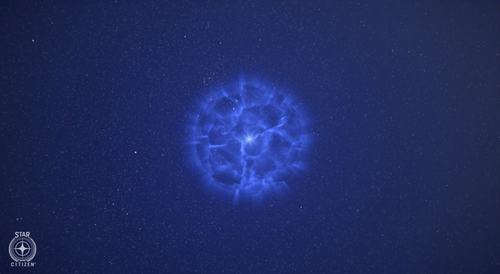
The team is currently looking at some of the older effects in the game and are reworking them to take advantage of the updated systems, such as the EMP, which was added some time ago and has since degraded due to issues with the old particle system.
Regarding weapons, the team polished and optimized the new ballistic pistol and assault rifles and took the first pass at the Tachyon cannon; a brand-new weapon type that was in its R&D phase last month.
On the ship side, the reworked 300i had a full VFX pass. Finally, as is usual in the run-up to a release, the team began their twice-weekly playtests, from which a fairly large ‘snag list’ was created and fixed.
Weapons
The Weapon Art Team started work on the Apocalypse Arms Animus missile launcher, the Klaus & Werner Lumin SMG, and new upgrade levels for various ship weapons.

